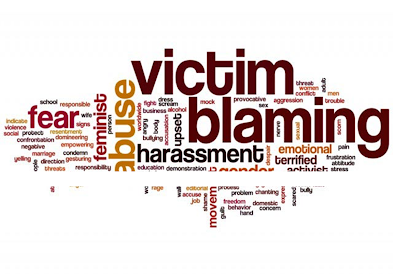
Hi Readers, I recently
attended a professional development webinar on, “The Inner Turmoil and
Questions of a Narcissist” and it was an eye-opener. I hear a lot about
narcissists these days, with people diagnosing their parents, coworkers,
friends, siblings, and just about anyone who disagrees with them. The
narcissist label has become overused and tiresome.
Narcissism is actually a Cluster
B personality disorder and to be diagnosed, the patient must meet at least five
of nine diagnostic criteria, according to the DSM-5. They must have an
interview with a clinical professional and sometimes, supplemental screenings
and assessments are administered in addition to the DSM-5 criteria for a differential
diagnosis and development of a treatment plan.
Below are my notes in brief
form to help my readers understand what narcissism is and isn’t, and to develop
communication strategies.
The presenter began with
this statement: “They are tormented souls. They have a running dialog in their
heads and here is what they ask themselves:”
1.
“Do you think I’m significant?”
2.
“Who can I get to stroke my ego?” (Narcissists
bring in lackies they can control. They are hungry for recognition.)
3.
“How do I compare to everyone else?” (This is
evaluative thinking. The narcissist cannot be average. They must be
superior and that means everyone else is inferior.)
4.
“What do I have to do to get what I want?”
(They develop smear campaigns and schemes.)
5.
“Why don’t people respect me? People are not
showing me the respect I deserve!” (Narcissists are angry.)
6.
“Why do people not trust me?” (Narcissists
have pathological defensiveness. They are thin-skinned. They are unable to draw
upon self-trust.)
7.
“What would happen if people discover
something unflattering about me?” (Narcissists lie. They are mask wearers. They
cover up and keep secrets.)
How to identify narcissistic behaviors
In this section, our professional
presenter was not illuminating how to diagnose one: leave that to
professionals. Narcissists are all around us, in our relationships, families, churches,
and workplaces. It is important for self-preservation and self-care that you
know how to identify narcissistic patterns and develop strategies for avoiding clashes,
quarrels, and stress. Narcissistic behaviors emerge during conflict. In
conflict, narcissists are highly threatened by others. These are deeply wounded
people and they are always trying to cover up their hurts.
· Narcissists
are highly tense and quickly agitated.
· Narcissists
anger quickly, sometimes on the spur of the moment.
· Narcissists
are unwilling to listen, ponder, or understand. (Lack of insight.)
· Narcissists
illustrate lack of regard for others.
· Narcissists
are quick to accuse and blame. “Who here is the bad guy?”
· Narcissists
insult, curse, and blame.
· Narcissists
cannot maintain decorum.
· Narcissists
avoid the topic or change the subject.
· When
they are called out or challenged, narcissists go into strong justification and
rationalization mode.
· Narcissists
create a revisionist history. “That’s not how it happened!”
· Narcissists
resort to silent treatment and disdain.
· Narcissists
are in high command mode and bossy.
· Narcissists
have highly inadequate coping skills. They take it to the finish line in a
deeply ugly way.
Strategies for interacting
with narcissists are extremely challenging, as you cannot respond back to them
in the same way you do with other people. Be different. They can also be mesmerizing
and charming. When communicating with them. BE CAREFUL, it’s a mirage. Don’t be
seduced. Use this strategy: Dignity. Respect. Civility. Establish boundaries.
When you do, you are telling the narcissist, “Watch how a healthy person does
this.” By responding with respect, civility, and dignity, how you react teaches
and helps.